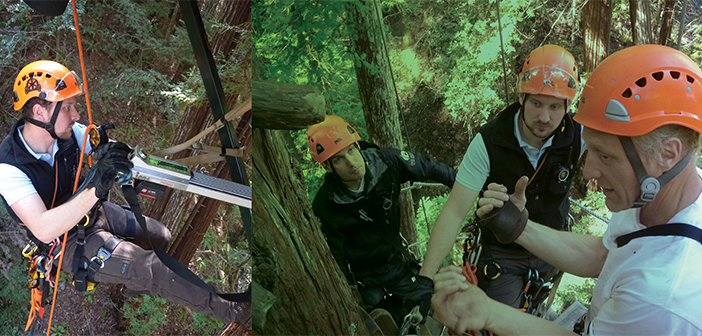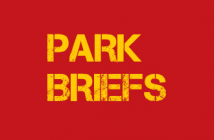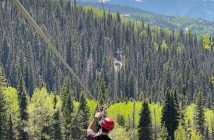
Tree Solutions arborists measure tree geometry to prepare for tomography test.
Pruning is a science as well as an art. Dr. Alex Shigo, considered the father of modern arboriculture, was the first to understand how trees resist the spread of decay caused by fungi. This knowledge resulted from of his review of the work of many other scientists, and his extensive work dissecting large trees
by chainsaw.
Shigo’s concept, compartmentalization of decay in trees (CODIT), represents the core science behind many modern pruning methods. Shigo determined that there is a barrier to the spread of decay between the wood of the branch and the trunk wood. This barrier is how trees protect against decay entering through branches that have been shed by the tree (self-pruning). He also found that wounds to the trunk of a tree resulted in a barrier to decay forming in the tree at the growth ring from the year the wound occurred.
Looking at trees he dissected, Shigo realized that often when humans pruned a tree branch, the cut was made into the trunk of the tree, behind the place where the branch emerges. Shigo called these “flush cuts.” He then defined the terms “branch bark ridge” and “branch collar” to describe the best place to make a mechanical pruning cut.
The goal of a proper cut is to cut only the wood of the branch, leaving the trunk tissue intact. When proper cuts are made, each year as the tree grows, the trunk will cover over the cut with new wood.
If you think about the above description, another important concept should be noted. This is the fact that trees do not “heal” wounds the way humans do, replacing the damaged cells with new ones in the same place. Trees simply grow over, or seal, wounds, covering them over with each new year’s increment of wood growth. This is important, as humans tend to anthropomorphize trees. Speaking or communicating as if a tree has human attributes is quite common, and can lead to poor tree management decisions.
Shigo always advised that before you prune a tree, ask yourself why you are doing it. As we noted before, pruning actions cannot be undone. Plus, many common pruning practices are, in fact, not beneficial to trees over the long term.
For example, “thinning” or “wind sail reduction” often robs the tree of live foliage, which is needed for the tree to remain stable. It might also remove the small internal branches that are the spare or replacement parts for the tree. These become important when older branches are shed. The interior and lower branches of a tree are its “old age insurance.” Additionally, because trees absorb a lot of energy with their branches, thinning can actually increase tree sway during storms.
Always keep in mind that even the most experienced, well-meaning, and ethical tree service is in the business of pruning and removing trees for their livelihood. That’s a good reason to seek out an impartial professional consultant to specify any tree work that must be done.
In future articles, we’ll describe more about how trees grow, and what impacts you can expect as a result of tree management activities and other steps we take to use trees for supporting structures. We’ll look at tree biomechanical growth, pruning specifics, species characteristics, impacts of various attachment strategies, and site ecosystem management. And if you have other topics and questions you want to explore, let me know. Email me at
[email protected], and mention Adventure Park Insider in the subject.







